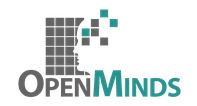- Research
- Research Memberships
- Smart Home
- Visibility Memberships
- Consumer Electronics and Entertainment
- Consulting
- Broadband and Mobility
- Primary Research
- Connected Health and Wellness
- MDU / Multifamily
- SMB
- Events
- Event
- Company
- About Parks Associates
- Consumer Electronics and Entertainment
- Consumer Electronics Devices
- Video Services: OTT, Pay TV
- Entertainment Content: Video, Audio, Gaming
-
Research
Smart Home
Smart Home Devices, Automation, Controls
Energy Management
Residential Security
Consumer Electronics and Entertainment
Consumer Electronics Devices
Video Services: OTT, Pay TV
Entertainment Content: Video, Audio, Gaming
Broadband and Mobility
Mobility
Wi-Fi and Home Networking
Support Services
Connected Health and Wellness
Wellness and Fitness
Independent Living
Telehealth
- Events
- White Papers
- Newsroom
- Company
- Consulting
- Contact Us

 What should executives keep in mind as they consider the expanding acceptance of and preference for virtual care delivery among consumers and payers? There are three big considerations that are outlined in Virtual Care Demand Could Test Care Providers’ Health IT Infrastructure In 2015, a piece by Harry Wang, the lead analyst for Parks Associates’ digital health research program, that appeared recently in Computerworld.
What should executives keep in mind as they consider the expanding acceptance of and preference for virtual care delivery among consumers and payers? There are three big considerations that are outlined in Virtual Care Demand Could Test Care Providers’ Health IT Infrastructure In 2015, a piece by Harry Wang, the lead analyst for Parks Associates’ digital health research program, that appeared recently in Computerworld.